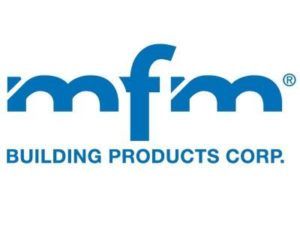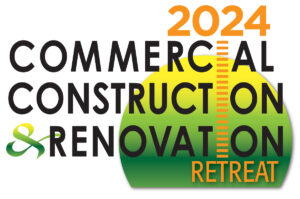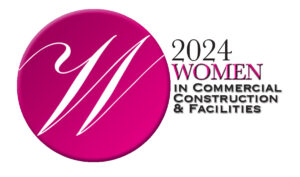Flat roofs are a popular choice for commercial buildings and residential homes with a modern, minimalist style. Compared to sloped roofs, flat roofs offer a unique design aesthetic and some unique advantages and disadvantages.
On the one hand, a flat roof can be an excellent choice for those looking for a cost-effective, low-maintenance roofing solution that is relatively simple to install. On the other hand, flat roofs also tend to have a shorter lifespan than sloped roofs, and their performance may be affected by climate and weather conditions.
Overall, the most suitable flat roof material for your project will depend on building type, climate, cost, and maintenance needs. This article will explore the different types of flat roof systems for replacement, their pros and cons, and what type of flat roofing system may best fit your needs.
What is a Flat Roof & Common Types
This type of roof is characterized by its horizontally level surface and minimal slope, making them prone to leaks if not installed correctly. A low-slope roof typically has a pitch or slope less than or equal to 3:12 or 1:4 ratio.
When selecting a flat roof type, factors such as climate, building type, roofing material, maintenance needs, and building code regulations should be considered. Furthermore, finding the right balance between cost and longevity is crucial to ensure the overall value proposition of the roof.
TPO, Built-up, and EPDM are three common flat roof types your roofing company may suggest, each of which will be covered in depth below.
TPO Roof (thermoplastic polyolefin)
Cost: $4.50-$11.50 per square foot (including labor)
When it comes to flat roofing, one of the most popular options on the market today is the TPO roof. TPO stands for thermoplastic polyolefin, and it’s a high-performance roofing material that’s often used for commercial and residential projects alike.
TPO roofs are made of a single-ply white membrane designed to reflect heat. This means that TPO roofs are highly energy-efficient, and they can help keep a room cooler than other types of roofing materials. This is especially important in warm climates where air conditioning costs are considerable.
However, torn or compromised seams where the TPO sheets join together can prematurely fail when exposed to intense heat for prolonged periods. Thus, states that experience high heat and extreme UV exposure, like South Florida or Texas, may shorten the lifespan of a TPO roof.
The thermoplastic polyolefin material is strong and flexible, which enables some settling in a building and thermal expansion from heat without destroying the integrity of the TPO membrane.
TPO is not resistant to non-polar solvents, and water ponding on the membrane for longer than 48 hrs can cause premature aging. Another concern for the membrane’s integrity is that exposure to sharp or heavy objects can puncture the TPO, causing leaks and requiring repair.
TPO roofs are suitable for a wide range of applications and are especially well-suited for flat roofs and low-slope dormers. They are also durable and have a reasonable life expectancy. Because TPO roofs are easy to install, they are also a popular choice for roofing contractors.
However, it’s important to note that installation is critical when it comes to getting the most out of your TPO roof. To ensure its maximum benefit and lifespan, it’s essential to work with an experienced TPO roofing contractor who has experience with TPO roofs and can install yours properly, with a material and workmanship warranty.
A TPO roof may be a great option if you’re in the market for a new flat roof. With its energy efficiency and suitability for a wide range of applications, TPO roofs offer several benefits worth considering. And with proper installation and maintenance, you can expect your TPO roof to provide reliable protection for years to come.
Built-up Roof (BUR)
Cost: $3-$7.50 per square foot (including labor)
Built-up roofing (BUR) is a popular type of flat roofing system that is commonly used for commercial buildings. It is made of multiple layers of waterproofing materials, which are layered to create a monolithic roof membrane that is resistant to UV rays and weather. BUR is best applied in flat roofing structures where the roof surface cannot shed water efficiently.
The built-up roofing system consists of different components that work together to provide a waterproof and durable roofing system. The process usually starts with a base sheet, which is applied to the roof structure using asphalt or a cold-applied adhesive. Layers of roofing felt, which are asphalt impregnated, are then layered on top of the base sheet, and hot tar is applied to bond the layers together. This process is repeated several times until the desired thickness is achieved.
Once the layers of roofing felt and asphalt have been applied, a layer of gravel or finely crushed stone granules is applied to the top layer of hot tar. This provides additional protection against weather and foot traffic.
Built-up roofing has several pros and cons worth considering. On the positive side, BUR is waterproof, fire-resistant, and highly durable, providing sound insulation for the building. On the other hand, if a leak develops, it may be challenging to locate due to the multiple layers of roofing materials. Also, BUR is quite heavy and not energy efficient. The typical lifespan of a built-up roofing system is 15-20 years, and the cost range is generally lower than other types of flat roofs.
EPDM Rubber Roof
Cost: $4.50-$12.50 per square foot (including labor)
If you’re looking for a durable, long-lasting roofing option for your commercial or residential building, you may want to consider the EPDM Rubber Roof. This roofing system is made of a synthetic rubber material, “ethylene propylene diene monomer,” which is designed to withstand harsh weather conditions and last for years.
EPDM Rubber Roof is commonly used on low-slope or flat roofs, providing reliable protection against leaks and damages. This type of roof is usually applied either by ballast or an adhered installation method.
The basic installation method for EPDM roofs involves laying down a base sheet, followed by an adhesive layer that holds the rubber roofing in place. However, there are two standard installation methods for EPDM roofs: ballasted and adhered.
Ballasted installation involves anchoring the roofing system in place with the weight of stone or other heavy materials. In contrast, adhered installation consists in using an adhesive to fix the roofing directly onto the underlying structure. The choice between these methods often comes down to cost, convenience, and other project-specific factors.
When deciding to install an EPDM roof, several key factors must be considered, including the environment, local weather patterns, and budget. Generally, EPDM roofs are known for their durability, resistance to punctures, and adaptability to different temperatures, making them ideal for harsh environments. Another significant advantage of EPDM Rubber Roof is this roofing system can last up to 50 years or more with proper installation and maintenance.
However, one potential disadvantage of EPDM roofing systems is their dark color, which can cause them to absorb heat and potentially increase your energy bills. Additionally, the synthetic rubber material of EPDM can degrade over time with prolonged exposure to UV rays, leading to cracks or leaks.
In summary, EPDM Rubber Roof is an excellent option for commercial and residential buildings that require a reliable, durable roofing system. Whether you use a ballasted or adhered installation method, EPDM roofs can provide years of reliable protection against leaks, punctures, and other types of damage.
Metal Roof
Cost: $3-$22 per square foot (including labor)
Metal roofing is a popular choice for flat roof systems, as it provides a sleek and modern appearance while offering durability and weather resistance. Metal roofs are available in various materials, such as aluminum, copper, steel, or zinc, and are commonly used in commercial buildings, warehouses, and industrial facilities.
One of the significant advantages of using a metal roof for a flat roof system is its durability. Metal roofing can protect the building from harsh weather conditions such as heavy rain, snow, hail, and strong winds. Moreover, it is resistant to cracking, shrinking, and eroding, making it a popular choice for a long-lasting flat roof system.
However, there are also some disadvantages to consider. Metal roofs tend to be more expensive compared to other flat roofing materials like rubber or modified bitumen. They are also prone to rust, especially if not maintained properly, and may be slippery, which poses a risk for foot traffic. Lastly, metal roofs can easily suffer from dents caused by hail or other debris, leading to potential leaks.
One highly recommended option for a metal roof in a flat roof system is a standing seam metal roof. This type of metal roof has raised seams that interlock firmly, creating a weather-tight seal. A standing seam metal roof provides a significant advantage in terms of durability, energy efficiency, and low maintenance costs. It also offers a modern aesthetic appeal to the building.
The lifespan of a metal roof is affected by various factors, such as proper installation and maintenance. Regular inspections and prompt repairs to the roof can prolong its lifespan. On average, a metal roof can last up to 40-70 years, depending on the quality of the material used, geographical location, and environmental conditions.
The cost of a metal roof installation depends on the chosen material, the size of the roof, and the complexity of the installation process. Additionally, labor expenses can add up to the total cost. A standing seam metal roof may cost more than other types; however, it is a long-term investment that can save costs in future maintenance and repair expenses.
In conclusion, metal roofs are an excellent choice for flat roof systems as they offer outstanding durability and weather resistance. Although a bit pricier than other flat roofing materials, a metal roof’s lifespan and recyclability make it an environmentally friendly and cost-effective option. Opting for a standing seam metal roof can further enhance the durability and aesthetic appeal of a flat roof system.
Types of Membranes and Low Slope Roofing Systems
In summary, flat roofs are often used in commercial and industrial settings due to their cost-effectiveness and versatility. There are several different types of flat roofs available, including built-up roofing, TPO, PVC roofs, rubber EPDM, and single-ply membranes. Each has its advantages and disadvantages, and selecting the right type will depend on a number of factors, including the building’s structure, climate, and budget.
When it comes to flat roofs, proper installation practices are critical for minimizing the risk of leaks and other common concerns. It’s important to consult with a professional roofing contractor like these Peterborough roofers: https://peterboroughrooferpros.co.uk/, who are experienced in flat roof installation, maintenance and to ensure that the roofing system complies with local building codes.
Ultimately, if you’re considering a flat roof for your property, weigh the pros and cons carefully and select a system that will balance cost-effectiveness, durability, and energy efficiency. With proper installation and maintenance, a flat roof can be a practical and long-lasting solution for your building’s roofing needs.
*Featured Image Source Photo Credit: Justin Johnson











 The 2024 virtual Men’s Round Table will be held Q4, 2024, date TBD.
The 2024 virtual Men’s Round Table will be held Q4, 2024, date TBD.













